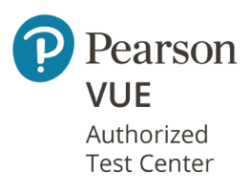Course Details
LU1: Monitoring, Logging, and Remediation
Topic 1.Implement metrics, alarms, and filters by using AWS monitoring and logging servicesSub-topic: Identify, collect, analyze, and export logs
- Collect metrics and logs using the CloudWatch agent
- Create CloudWatch alarms
- Create metric filters
- Create CloudWatch dashboards
- Configure notifications (e.g., Amazon SNS, Service Quotas, CloudWatch alarms, AWS Health events)
Topic 2 Remediate issues based on monitoring and availability metrics
- Troubleshoot or take corrective actions based on notifications and alarms
- Configure Amazon EventBridge rules to trigger actions
- Use AWS Systems Manager Automation documents to take action based on AWS Config rules
LU2: Reliability and Business Continuity
Topic 3 Implement scalability and elasticitySub-topic: Create and maintain AWS Auto Scaling plans
- Implement caching
- Implement Amazon RDS replicas and Amazon Aurora Replicas
- Implement loosely coupled architectures
- Differentiate between horizontal scaling and vertical scaling
Topic 4 Implement high availability and resilient environmentsSub-topic: Configure Elastic Load Balancer and Amazon Route 53 health checks
- Differentiate between the use of a single Availability Zone and Multi-AZ deployments (e.g., Amazon EC2 Auto Scaling groups, Elastic Load Balancing, Amazon FSx, Amazon RDS)
- Implement fault-tolerant workloads (e.g., Amazon Elastic File System [Amazon EFS], Elastic IP addresses)
- Implement Route 53 routing policies (e.g., failover, weighted, latency-based)
Topic 5: Implement backup and restore strategiesSub-topic: Automate snapshots and backups based on use cases
- Sub-topic: Restore databases (e.g., point-in-time restore, promote read replica)
- Sub-topic: Implement versioning and lifecycle rules
- Sub-topic: Configure Amazon S3 Cross-Region Replication
- Sub-topic: Execute disaster recovery procedures
LU3: Deployment, Provisioning, and Automation
Topic 6: Provision and maintain cloud resourcesSub-topic: Create and manage AMIs
- Create, manage, and troubleshoot AWS CloudFormation
- Provision resources across multiple AWS Regions and accounts (e.g., AWS Resource Access Manager, CloudFormation StackSets, IAM cross-account roles)
- Select deployment scenarios and services (e.g., blue/green, rolling, canary)
- Identify and remediate deployment issues (e.g., service quotas, subnet sizing, CloudFormation and AWS OpsWorks errors, permissions)
Topic 7 Automate manual or repeatable processes
- Use AWS services (e.g., OpsWorks, Systems Manager, CloudFormation) to automate deployment processes
- Implement automated patch management
- Schedule automated tasks by using AWS services (e.g., EventBridge, AWS Config)
Domain 4: Security and Compliance
Topic 8 Implement and manage security and compliance policiesSub-topic: Implement IAM features
- Troubleshoot and audit access issues using AWS services (e.g., CloudTrail, IAM Access Analyzer, IAM policy simulator)
- Validate service control policies and permissions boundaries
- Review AWS Trusted Advisor security checks
- Validate AWS Region and service selections based on compliance requirements
- Implement secure multi-account strategies (e.g., AWS Control Tower, AWS Organizations)
Topic 9 Implement data and infrastructure protection strategiesSub-topic: Enforce a data classification scheme
- Create, manage, and protect encryption keys
- Implement encryption at rest (e.g., AWS Key Management Service [AWS KMS])
- Implement encryption in transit (e.g., AWS Certificate Manager, VPN)
- Securely store secrets using AWS services (e.g., AWS Secrets Manager, Systems Manager Parameter Store)
- Review reports or findings (e.g., AWS Security Hub, Amazon GuardDuty, AWS Config, Amazon Inspector)
LU5 Networking and Content Delivery
Topic 10 Implement networking features and connectivitySub-topic: Configure a VPC
- Configure private connectivity (e.g., Systems Manager Session Manager, VPC endpoints, VPC peering, VPN)
- Configure AWS network protection services (e.g., AWS WAF, AWS Shield)
Topic 11 Configure domains, DNS services, and content deliverySub-topic: Configure Route 53 hosted zones and records
- Implement Route 53 routing policies (e.g., geolocation, geoproximity)
- Configure DNS (e.g., Route 53 Resolver)
- Configure Amazon CloudFront and S3 origin access identity (OAI)
- Configure S3 static website hosting
Topic12 Troubleshoot network connectivity issuesSub-topic: Interpret VPC configurations
- Collect and interpret logs (e.g., VPC Flow Logs, Elastic Load Balancer access logs, AWS WAF web ACL logs, CloudFront logs)
- Identify and remediate CloudFront caching issues
- Troubleshoot hybrid and private connectivity issues
LU6 Cost and Performance Optimization
Topic 13 Implement cost optimization strategiesSub-topic: Implement cost allocation tags
- Identify and remediate underutilized or unused resources using AWS services and tools (e.g., Trusted Advisor, AWS Compute Optimizer, Cost Explorer)
- Configure AWS Budgets and billing alarms
- Assess resource usage patterns to qualify workloads for EC2 Spot Instances
- Identify opportunities to use managed services (e.g., Amazon RDS, AWS Fargate, EFS)
Topic 14 Implement performance optimization strategies
- Recommend compute resources based on performance metrics
- Monitor Amazon EBS metrics and modify configuration to increase performance efficiency
- Implement S3 performance features (e.g., S3 Transfer Acceleration, multipart uploads)
- Monitor RDS metrics and modify the configuration to increase performance efficiency (e.g., Performance Insights, RDS Proxy)
- Enable enhanced EC2 capabilities (e.g., enhanced network adapter, instance store, placement groups)
Course Info
HRDF Funding
Please refer to this video https://youtu.be/Kzpd-V1F9Xs
1- HRD Corp Grant Helper
How to submit grant applications for HRD Corp Claimable Courses
2- Employers are required to apply for the grant at least one week before training commences.
Employers must submit their applications with supporting documents, including invoices/quotations, trainer profiles, training schedule and course content.
3- First, Login to Employer’s e-TRIS account -https://etris.hrdcorp.gov.my
Second, Click Application
4- Click Grant on the left side under Applications
5- Click Apply Grant on the left side under Applications
6- Click Apply
7- Choose a Scheme Code and select HRD Corp Claimable Courses: Skim Bantuan Latihan Khas. Then, click Apply
8- Scheme Code represents all types of training that suit the requirements provided by HRD Corp. Below are the list of schemes offered by HRD Corp:
9- Select your Immediate Officer and click Next
10- Select a Training Provider, then click Next
11- Please select a training programme from the list, then key in all the required details and click Next
Select your desired training programme.
Give an explanation on why the participant is required to attend the training. E.g., related to their tasks/ career development, etc.
Explain the background and objective of this training.
Select a relevant focus area. For Employer-Specific Courses, select ‘Not Applicable’.
12- If the training programme is a micro-credential programme, you are required to complete these 3 fields. Save and click Next
Insert MiCAS Application number
13- Based on the nine (9) pillars listed below, HRD Corp Focus Area Courses are closely tied to support government initiatives towards nation building. As such, courses offered through the HRD Corp Focus Areas are designed to provide the workforce with skills required for current and future demands. Details of the focus areas are as follows:
14- Please select a Course Title and Type of Training
15- Select the correct type of training according to the actual type of training, or as mentioned in the training brochure:
16- Please key in the Training Location and click Next
17- Please select the Level of Certification and click Next
18- Please follow the instructions and key in trainee details
19- Click Add Batch, then click Save
20- Click Add Trainee Details
21- Please key in all the required details, then click Add
22- Click Add if there are more participants. Once done, click Save
23- Click Next
24- Please key in the course fees and allowance details, then click Save
25- Estimated cost includes the course fees/external trainer fees, allowances, and consumable training materials. Please comply with the HRD Corp Allowable Cost Matrix.
26- Select Upfront Payment to Training Provider and key in the percentage from 0% to 30%. Then, click Save and Next
27- Complete the declaration form and select a desired officer
28- Add all the required documents, then click Add Attachment. Then, click Save and Submit Application
29- Once the New Grant Application is successfully submitted, the Grant Officer will evaluate the application accordingly. The application may be queried if additional information is required.
The application status will be updated via the employer’s dashboard, email, and the e-TRiS inbox.
Job Roles
- Systems Administrator
- Cloud Engineer
- DevOps Engineer
- IT Manager
- Network Administrator
- Solutions Architect
- Technical Support Engineer
- Infrastructure Engineer
- Security Analyst
- Database Administrator
- Software Developer
- IT Consultant
- Cloud Solutions Architect
- Operations Manager
- IT Project Manager
Trainers
Agus Salim : I am professional with more than 10 years of experience in Project Management, IT Solutions Management, and Systems Integration both in waterfall and agile methodology. He started out his career as a Web Developer before moving on to Business Analyst/Project Manager. He has strong leadership and the capability of leading a team with a proven ability to deliver projects with tight timelines. Besides his experiences in managing projects, he has good knowledge in Cybersecurity and hands-on experience in Next Generation Firewall such as Check Point. During his free time, he likes to explore Cloud Technology, especially on Microsoft Azure. Agus Salam is AWS cloud practitioner certified.














